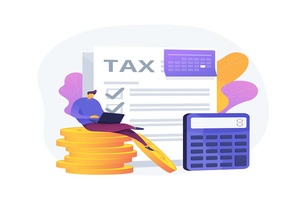Which Tax Regime Is Better in 2023? New vs. Old
Corps
In the ever-evolving landscape of taxation, staying updated on the latest changes and understanding their implications is crucial for individuals and businesses alike. As we step into 2023, one of the burning questions on the minds of taxpayers is, "Which tax regime is better - the new or the old?" In this comprehensive guide, we will dissect both tax regimes, explore their key features, and help you make an informed decision that aligns with your financial goals.
Introduction
Understanding the ever-changing tax landscape is crucial for individuals and businesses to make informed financial decisions. One of the significant changes in recent years has been the introduction of the new tax regime in India. In this article, we will delve into the details of both the old and new tax regimes and help you decide which one might be better suited to your financial situation.
The Old Tax Regime
Historical Context
The old tax regime has been in existence for several years and is a familiar territory for most taxpayers. It follows a progressive tax structure, where individuals are taxed based on their income, with higher earners paying higher taxes.
Tax Slabs and Rates
Under the old regime, the tax slabs and rates are as follows:
- Income up to ₹2.5 lakhs: Nil tax
- Income between ₹2.5 lakhs and ₹5 lakhs: 5% tax
- Income between ₹5 lakhs and ₹10 lakhs: 20% tax
- Income above ₹10 lakhs: 30% tax
Deductions and Exemptions
One of the advantages of the old regime is the availability of various deductions and exemptions under sections like 80C, 80D, and 24(b). These deductions can significantly reduce your taxable income.
The New Tax Regime
Overview of the New Tax Structure
The new tax regime, introduced in 2020, aims to simplify the tax system by offering reduced tax rates in exchange for the removal of most deductions and exemptions.
Tax Slabs and Rates
Under the new regime, the tax slabs and rates are as follows:
- Income up to ₹2.5 lakhs: Nil tax
- Income between ₹2.5 lakhs and ₹5 lakhs: 5% tax
- Income between ₹5 lakhs and ₹7.5 lakhs: 10% tax
- Income between ₹7.5 lakhs and ₹10 lakhs: 15% tax
- Income between ₹10 lakhs and ₹12.5 lakhs: 20% tax
- Income between ₹12.5 lakhs and ₹15 lakhs: 25% tax
- Income above ₹15 lakhs: 30% tax
Taxpayer Categories
The new regime categorizes taxpayers into different groups based on their age and income. This categorization can impact the applicable tax rates.
Comparing Tax Liabilities
To determine which tax regime is better for you in 2023, it's essential to calculate your tax liability under both regimes. You can use online calculators or seek assistance from tax professionals.
Scenario Analysis
We will explore various scenarios to understand which regime may be more advantageous for different income levels and financial situations.
Benefits of the Old Tax Regime
Who Should Consider the Old Regime?
The old tax regime is beneficial for individuals with substantial deductions and exemptions. It allows you to reduce your taxable income significantly.
Maximizing Deductions
We will provide insights into how you can maximize deductions under the old regime, helping you minimize your tax liability.
Advantages of the New Tax Regime
Why Opt for the New Regime?
The new tax regime offers simplicity and lower tax rates. We will discuss who can benefit the most from this regime.
Simplified Tax Filing
With fewer deductions and exemptions to consider, tax filing under the new regime is often more straightforward and less time-consuming.
Factors Influencing Your Decision
Income Level and Source
Your income level and source of income play a crucial role in determining which tax regime is more advantageous for you.
Financial Goals
Consider your short-term and long-term financial goals when choosing between the old and new tax regimes.
Future Tax Planning
The decision you make now can impact your tax planning in the future. We will discuss how to align your tax strategy with your future goals.
Making an Informed Choice
Consultation with Tax Professionals
Seeking advice from tax professionals like AMpuesto can help you make an informed decision based on your unique financial circumstances.
Decision-Making Process
AMpuesto will provide a step-by-step guide to help you make the right choice between the old and new tax regimes.
FAQs
Frequently Asked Questions
- Can I switch between the old and new tax regimes every year?
- Answer: Yes, you can switch annually based on your preference.
- Are all deductions and exemptions eliminated in the new tax regime?
- Answer: No, some exemptions like EPF and PPF remain applicable.
- Is the new tax regime more beneficial for salaried individuals or business owners?
- Answer: It depends on various factors, including income sources and deductions.
- What are the penalties for choosing the wrong tax regime?
- Answer: There are no penalties; however, your tax liability may vary.
- How do I calculate my tax liability under the new regime?
- Answer: You can use the new tax calculator provided by the income tax department.
Conclusion
In the end, the decision between the old and new tax regimes should align with your financial goals and income sources. Take into account your unique circumstances, consult with professionals if needed, and make an informed choice that optimizes your tax liabilities for 2023.
Source: https://techplanet.today/post/which-tax-regime-is-better-in-2023-new-vs-old












commentaires